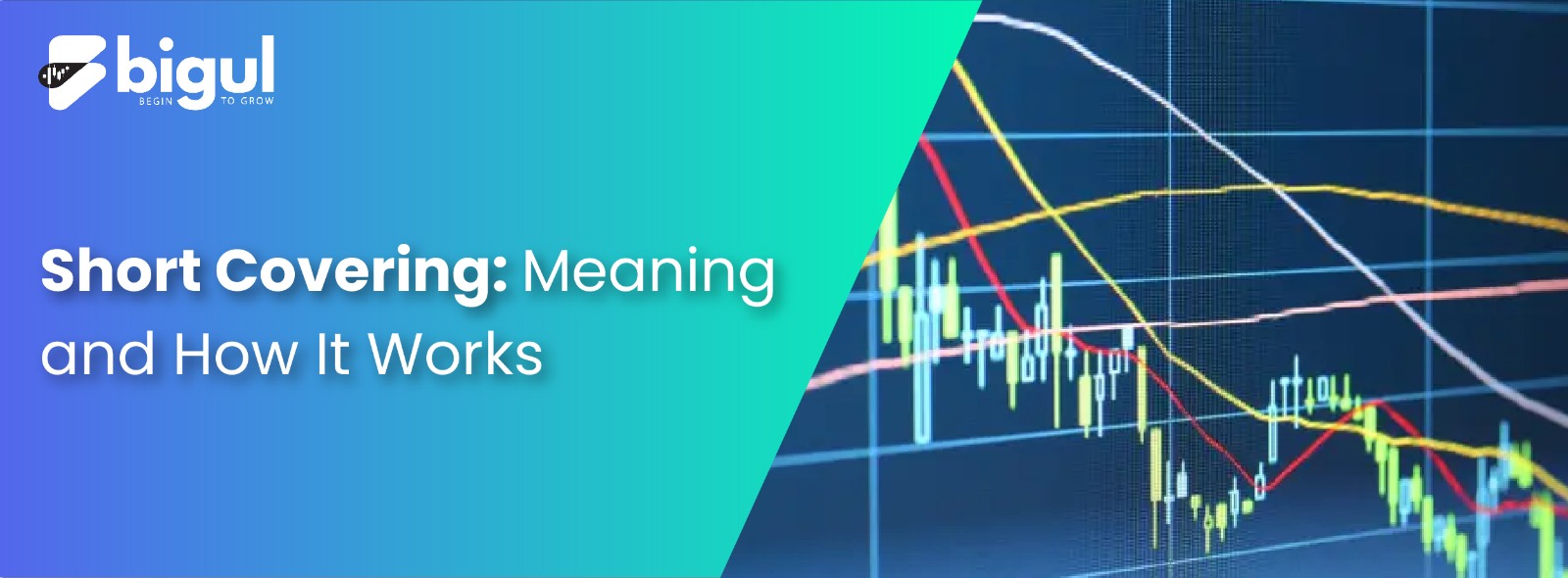Have you ever wondered why some investors rush to buy stocks they previously sold? It’s called “short covering,” and it’s a bit like a financial about-face. Imagine you borrowed your friend’s toy but suddenly everyone wants it, so you race to return it.
In the stock market, short covering happens when investors scramble to buy back shares they borrowed and sold earlier. But why? That’s the intriguing part we’ll unravel together.
In this article, we’ll break down the meaning of short covering and explore how this interesting concept works in the fascinating world of finance.
What is Shorting?
Shorting, or short selling, is when you borrow an asset (like stocks) and sell it at the current market price, with the aim to repurchase it later at a lower price. If successful, you profit from the price difference. However, if the asset’s value rises, you incur losses.
For example, if a trader buys 100 shares of X Ltd at Rs 100 each and later the price drops to Rs 80 per share, the trader can make a profit by selling them at the new price. The profit would be Rs 20 per share (initial price minus the new price), and since there are 100 shares, the total profit would be Rs 2000 (Rs 20 * 100 shares).
Shorting allows you to benefit from falling prices in financial markets, but it involves significant risk as losses can be unlimited if the asset’s value increases substantially. It’s a speculative strategy requiring careful timing and analysis to capitalise on market downturns.
When to Book a Profit on the Short Position?
A short position in trading involves selling an asset, like stocks, that you don’t own. The goal is to repurchase the assets at a lower price, making a profit from the price difference. Deciding when to book a profit on a short position depends on your trading strategy and market analysis. There’s no one-size-fits-all answer. Generally, it involves monitoring the market closely, setting predefined profit targets, and being aware of key technical and fundamental indicators. Some traders use specific percentage gains, chart patterns, or trend reversals as signals to cover their short positions and secure profits.
Basically, you can book a profit on a short position when:
- The market is trending downward
- Stocks are weak
- The trader speculates correctly
- Share prices fall below the market price
It’s crucial to have a clear exit strategy in place and adapt it based on changing market conditions.
What are the Risks of Shorting?
Shorting carries several risks:
1. Unlimited Losses
Shorting involves unlimited loss potential, unlike buying stocks. When an investor shorts, they sell borrowed assets with the expectation of repurchasing them at a lower price. However, if the asset’s value rises, losses can accumulate without a predefined limit. This contrasts with buying, where the maximum loss is the initial investment, making shorting riskier and necessitating careful risk management strategies.
2. Margin Calls
Margin calls are a risk in short selling where brokers demand additional funds if the shorted asset’s value rises. If you fail to meet the call, the broker may square off the short position in a loss. This can result in unexpected financial burdens, as you must maintain enough capital to cover potential losses and margin requirements set by the broker.
3. Timing Risk
Timing risk in shorting refers to the challenge of accurately predicting market movements. If the short position is initiated at the wrong time, and the asset’s value doesn’t decrease as expected, losses may occur. Market dynamics are unpredictable, and mistimed short positions can lead to financial setbacks. So, it’s important to analyse the market carefully before initiating shorts.
4. Dividend Payments
When shorting, be aware of dividend payments on borrowed stocks. As the short seller, you’re responsible for covering these payments, adding to the overall cost of maintaining the short position. This factor can increase the financial burden of the short trade and affect your overall profitability, making it essential to factor in dividend considerations when shorting assets.
5. Squeeze Risk
Watch out for a “short squeeze.” If many others also short the same stock, a sudden price surge can force everyone to buy back shares simultaneously to cover positions, intensifying upward momentum. This can result in significant losses as you try to exit the short position amid rising prices driven by the collective buying pressure. Stay vigilant to avoid being caught in a squeeze.
6. Market Volatility
Market volatility poses a risk as abrupt and unpredictable price movements can lead to significant losses. Rapid market fluctuations, driven by news or events, may cause short positions to face sudden and substantial changes in asset values, making it challenging for you to manage and mitigate potential risks effectively.
What is Short Covering in the Share Market?
Short covering in the share market occurs when you, as a trader, buy back the borrowed stocks you previously sold short. This is done to close the short position and potentially lock in profits or minimise losses. For instance, if you short-sold 100 shares of Company X at Rs 50 each and later buy them back at Rs 40 per share, your short position results in a Rs 10 per share profit. It excludes transaction costs as you return the borrowed shares and close the position.
How Short Covering Works?
Short covering involves closing a short position by buying back the borrowed assets. If you initially sold shares anticipating a price drop, and the market moves against you. Then repurchasing the shares as soon as possible is a better option to minimise the loss. This buying activity to cover shorts adds upward pressure to the asset’s price. Timing is crucial and short covering is often triggered by the desire to limit losses or capitalise on anticipated price increases.
Special Considerations – Short Interest and Short Interest Ratio (SIR)
For you as a trader, understanding Short Interest (SI) and Short Interest Ratio (SIR) is crucial when navigating the stock market. High SI and SIR indicate significant short positions, heightening the risk of short covering. As a short seller, your holding period is shorter due to the potential for unlimited losses in uptrends. Recognizing a short squeeze is challenging, and it’s vital not to overcommit your portfolio.
On the other hand, short covering is an opportunity for bullish speculators to make quick profits. However, it demands a deep understanding of markets and technical to benefit from this type of opportunity.
Conclusion
Short covering is when investors buy back borrowed assets to minimise losses. It happens when asset prices rise, posing risks for short sellers. Understanding Short Interest and Short Interest Ratio is key to assessing this risk. While short covering offers profit opportunities, caution is needed to navigate market shifts.
For simplified and user-friendly trading experiences, consider using the Bigul trading platform—a reliable choice for effective and secure transactions.







.jpg)
.jpg)
